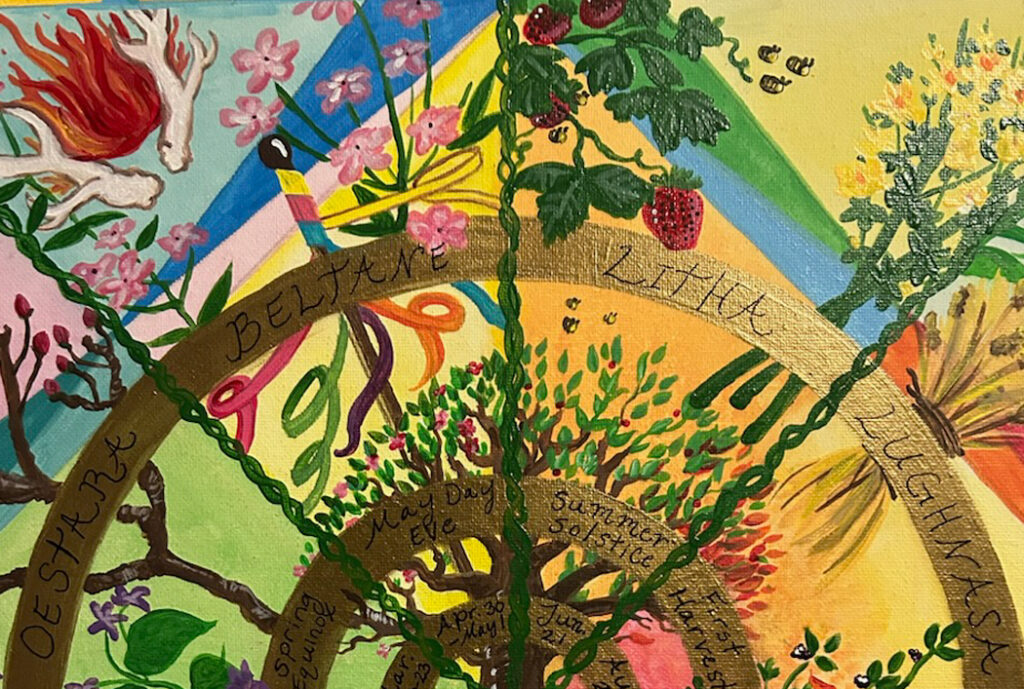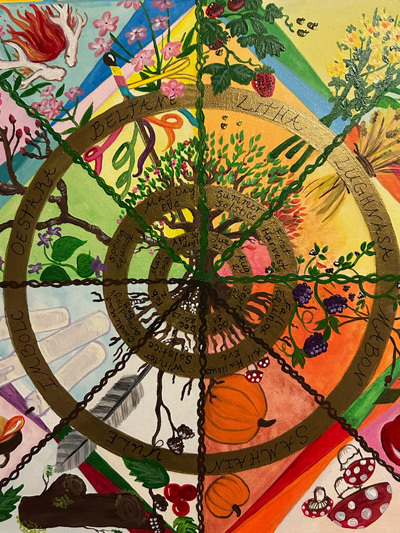
Spring has sprung, and it’s a good time to stop, drop, and celebrate the great outdoors! Throughout history, changing seasons have affected human behavior, and celebrating these transitions spans myriad cultures, from Greek and Roman to Nordic and Celtic. Many holidays now celebrated in the United States share roots in these earliest cultures.
In ancient times people followed the cycles in nature by tracking the sun. Taking a cue from the season’s prominent qualities—i.e., summer’s warmth and abundance or winter’s chill and inactivity—these cultures paved pathways for celebrations that cultivated gratitude and community connections.

The ancient Celtic calendar, also called the Wheel of the Year, still survives today with its rich traditions. The wheel starts with the Celtic Cross dividing the circle into four parts, one for each major season. Each quarter is then divided to make cross-quarters. The summer and winter seasons begin with the solstices. In our Northern Hemisphere, the winter solstice is the shortest day of the year and the summer solstice is the longest. Spring and autumn begin with the equinoxes, which are the times when the amount of daylight and darkness are most equal. The cross-quarter markers tend to be the high point of each season and occur at the midway point between the solstices and equinoxes.
The Celtic calendar has the new year begin in the mid-fall cross-quarter season of Samhain on October 31. It corresponds to the Catholic holiday All Saints’ Day and the Mexican holiday Day of the Dead, as well as our popular Halloween.
Then comes Yule, the winter solstice, falling on December 21. It’s a time to honor the darkness and praise the coming return of sunshine. Christians chose to celebrate the birth of Christ, Christmas, during this special time. Pagan communities created bonfires and walked circles of lit candles, remembering that the light always returns after the darkest spell of the Yule. Sweden, Finland, Norway, and Prussia all had traditions of bringing evergreen trees inside their homes, decorating them with candles, and dancing around the trees in an effort to absorb the life-sustaining elements of the firs and pines.
Next on the Celtic calendar comes Imbolc on February 2, marking the mid-way point between Yule and the beginning of spring. Today, we celebrate that date as Groundhog Day, when a furry rodent named Punxsutawney Phil predicts the advent of spring. While this holiday seems more silly than sensible, the tradition was started by German settlers in Pennsylvania as a way to commemorate their homeland tradition of Candlemas.
Oestara, March 20–23, is the Celtic time of renewal and growth after the hibernation of wintertime, and it also marks the spring equinox. Modern Easter traditions coincide with Oestara—even its spelling is similar. Goddesses of fertility in Celtic and Norse traditions were honored with offerings using symbols of eggs and rabbits, things found plentifully in spring.
The Celtic holiday Beltane, also simply known as May Day, is April 30–May 1. Dancing around the Maypole stems back to this spring celebration. This is the height of springtime, when life begins to get busy again.
Litha is the summer solstice, on June 21, marking the midsummer night’s festivals that celebrate the abundant light and high productivity of the season. Far Northern European countries such as Latvia, where the sun never completely sets in summer, have solstice festivals with bonfires, flower crowns, and chanting all night. Dancing takes place throughout the lightest day and brightest night of the year.
Lughnasa, on August 2, is the first harvest festival, celebrating the early fruits. This was a significant time for trading goods, hosting weddings, and enjoying music, storytelling, and athletic competitions. Our modern traditions of the 4th of July and Labor Day may have some basis in the late-summer traditions of old.
Mabon, on September 21, is the autumn equinox, marking the beginning of fall and the changing colors. Germanic traditions like Octoberfest celebrate this season of bringing in the harvest with feasting and drinking.
After Mabon, the Wheel of the Year returns to Samhain again, the beginning of the whole cycle. The energy of nature returns to the womb of the earth, creating the space for the next cycle of life in the year ahead.
This year, make sure you check out local events for seasonal fun in your community, and remember to celebrate and enjoy nature in all her changing beauty.
